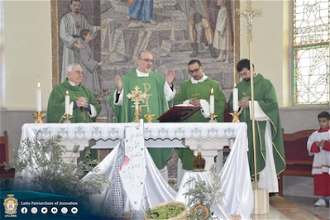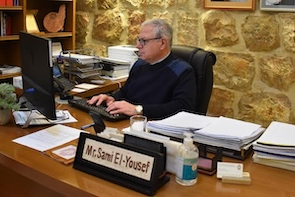Brazil: abseiling engineers begin repairs on statue of Christ the Redeemer

A team of specialists has begun to repair the statue of Christ the Redeemer, overlooking Rio de Janeiro, after it was damaged by a lightening strike last month. The Rio Archdiocese, owner of the statue, has entrusted the work to a group of abseiling eigineers, to avoid the use of scaffolds, and allow visits to continue while repairs are underway. Archbishop Orani Tempesta blessed the workers on Friday.
The statue of Christ the Redeemer on Corcovado mountain in the Tijuca Forest National Park, is considered to be the largest Art Deco figure in the world. It is 30 metres tall, not including its eight metres pedestal, and its arms stretch 28 metres wide. It weighs 635 tonnes.
The idea of erecting a large statue atop Corcovado was first suggested in the mid-1850s, when Fr Pedro Maria Boss requested financing from Princess Isabel to build a large religious monument. Princess Isabel did not think much of the idea and it was dismissed in 1889, when Brazil became a republic with laws mandating the separation of church and state. The second proposal for a landmark statue on the mountain was made in 1920 by the Catholic Circle of Rio. The group organized an event called Semana do Monumento ('Monument Week') to attract donations and collect signatures to support the building of the statue. Many designers were considered before the statue of Christ the Redeemer with open arms, a symbol of peace, was finally chosen.
Local engineer Heitor da Silva Costa designed the statue. It was sculpted by Polish French sculptor Paul Landowski. A group of engineers and technicians decided to build the structure out of reinforced concrete, designed by Albert Caquot. The outer layers are soapstone, chosen for its enduring qualities and ease of use. Construction took nine years, from 1922 to 1931 and cost the equivalent of US$250,000 ($3,300,000 in 2014). The monument was opened on 12 October, 1931.
The statue was meant to be lit by a battery of floodlights triggered remotely by shortwave radio pioneer Guglielmo Marconi, stationed 9,200 km away in Rome, but poor weather affected the signal and it had to be lit by workers in Rio.
In October 2006, on the statue's 75th anniversary, Archbishop of Rio Cardinal Eusebio Oscar Scheid consecrated a chapel (named after the patron saint of Brazil - Nossa Senhora Aparecida, or 'Our Lady of the Apparition') under the statue. This allows Catholics to hold baptisms and weddings there.
Through the years the statue has required restoration work and repairs for erosion, lightening strikes and other damage. The statue was struck by lightning during a violent electrical storm on 10 February, 2008, and suffered some damage on the fingers, head and eyebrows. A restoration effort was put in place by the Rio de Janeiro state government. During the unveiling of the restored statue, it was illuminated with green and yellow lighting in support of the Brazil national football team playing in the 2010 FIFA World Cup.
It was damaged again by lightning this year on 17 January when a finger on the right hand was broken. The current repairs are expected to take about four months.


















